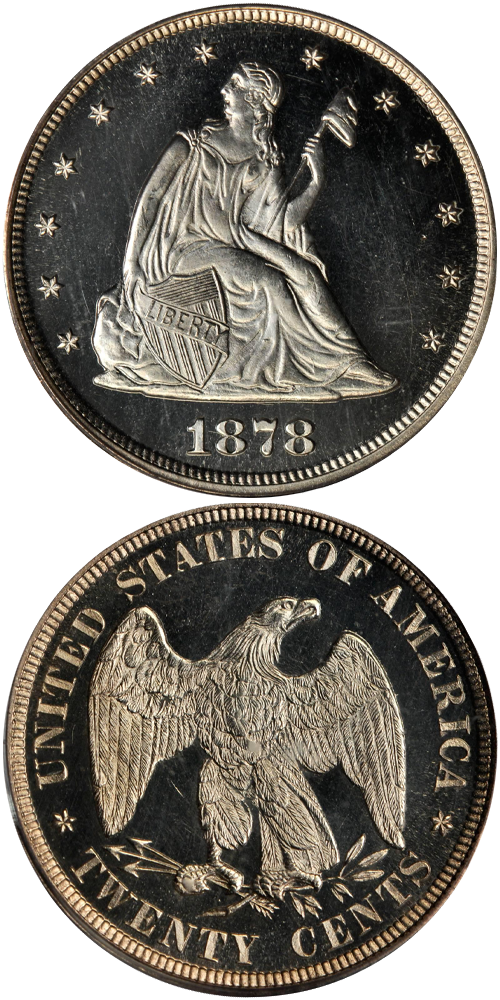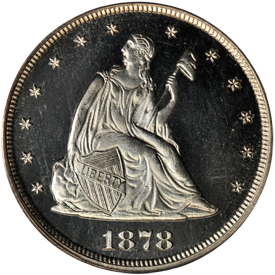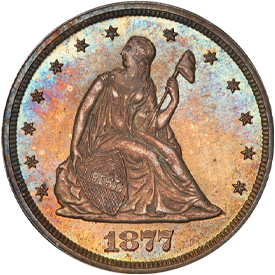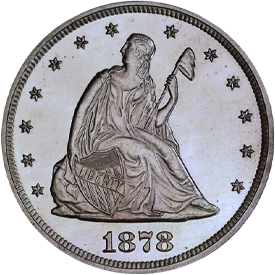Designed by: William Barber (obverse after Christian Gobrecht)
Issue Dates: 1875-1878
Composition: 90% silver, 10% copper
Diameter: 22 mm
Weight: 5.00 grams (77.16 grains)
Edge: Plain
Proof Mintage: 5,000
Due to its extremely short life (1875-78) there are not a lot of Proof Twenty Cent pieces around. According to the Guidebook, a total of only 3,460 pieces were produced in all four years. Many have survived, and today, the two major services have graded a combined total of just over 3,100 pieces. Of course, there almost certainly are a good deal of resubmissions and crossovers included in that number, but it’s probably safe to say that at least 2,000 unique pieces are extant.
The majority of certified pieces fall into the PR-62 to 64 range, but a collector searching for a PR-65 or even a PR-66 will not find the effort to be frustrating. Locating anything above PR-66 however will be tough, and while there are perhaps two or three dozen of these ultra-gems around, they appear infrequently and regularly run well into mid-five figures. Cameos can be found on perhaps around 15% of the PCGS certified coins, and 25% of the NGC graded pieces. Deep or Ultra cameos are rare.
The 1877 and 1878 pieces, struck only in Proof grade, have always been landmarks in the series. The precise mintage figures, currently given as 350 for 1877 and 600 for 1878, have been in question, and from time-to-time different figures (such as 510 for the 1877) have been published. The published production figures of nineteenth century Proof coins are not necessarily the same as the quantities actually distributed. Proof sales tended to be erratic, particularly for the larger denominations.









